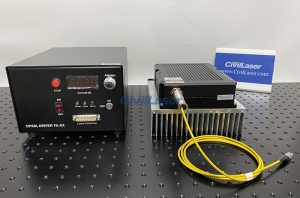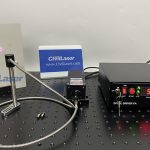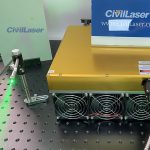Category Archives: Laser Beam
40000mW Strong Laser Beam 520nm Green Lab Laser System
As an important part of modern science and technology, fiber-coupled lasers play a key role in many fields with their high efficiency, stability and flexibility. Among them, the 520nm 40W fiber-coupled laser has become a leader in many applications with its unique wavelength and powerful power.
The 520nm 40W fiber-coupled laser belongs to the visible light band, which makes it perform well in applications that require a specific color light source. At the same time, its power output of up to 40 watts ensures powerful laser energy and is suitable for a variety of high-demand processing and measurement tasks.
This is a 520nm 40W high power green laser. The bottom of the laser head has a heat sink, which is an aluminum heat dissipation module with 3 fans. There are 3 working modes to choose from on the back of the power supply: CW/TTL/Analog. The regulator button on the power supply is used to adjust the operating current, thereby adjusting the laser output power.
Fiber-coupled lasers efficiently couple the laser beam generated by the laser diode into the optical fiber through precise fiber coupling technology. This process requires precise focal length adjustment and angle control to ensure that the beam can enter the optical fiber without loss and be stably transmitted along the path of the optical fiber. Fiber coupling technology not only improves the efficiency of laser transmission, but also enables the laser to maintain stable performance in complex environments.
Laser output after installing the optical fiber.
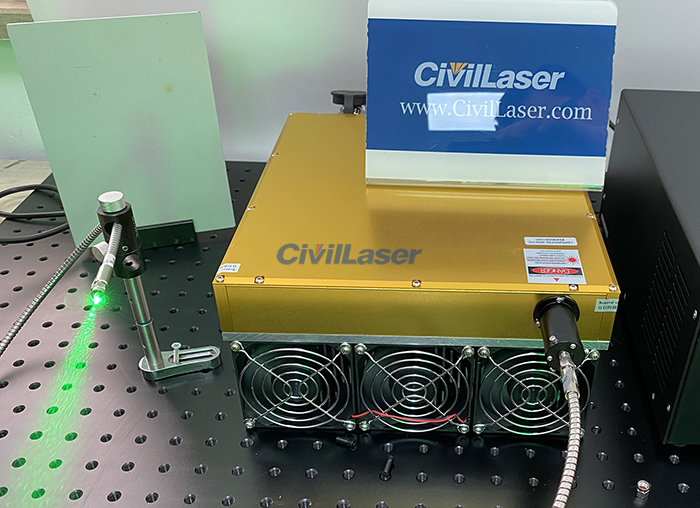
With its unique wavelength and powerful power, the 520nm 40W fiber-coupled laser has shown a wide range of application prospects in many fields. Its high efficiency, stability and flexibility make it an indispensable and important tool in modern technology. With the continuous advancement of technology and the continuous expansion of application fields, it is believed that the 520nm 40W fiber-coupled laser will play a greater role in more fields.
430nm 1W Semiconductor Laser Operation Video
Semiconductor lasers, also known as laser diodes, are lasers that use semiconductor materials as working materials to produce stimulated emission. Among the many semiconductor lasers, 430nm 1W semiconductor lasers have become a highly sought-after product in the market due to their unique technical characteristics and wide range of applications. This article will explore in depth the technical characteristics, application fields and market prospects of 430nm 1W semiconductor lasers.
The 430nm 1W semiconductor laser has a series of remarkable technical characteristics. First, its small size and light weight make it easy to integrate in various application scenarios. Secondly, the laser has high electro-optical conversion efficiency, long working life, low power consumption, and can be directly electrically modulated, making it easy to achieve optoelectronic integration with various optoelectronic devices. In addition, the 430nm wavelength gives the laser unique advantages in specific application fields, such as optical communications, sensing technology, and biomedicine.
Demonstration effect of 430nm 1W laser in indoor during daytime.
The 430nm 1W semiconductor laser has become a highly regarded product in the market with its unique technical characteristics and wide application fields. With the continuous advancement of technology and the continuous expansion of the market, this laser is expected to play an important role in more fields and make greater contributions to economic development and social progress.
435nm 18W Blue Semiconductor Laser Fiber Output
Today we are showing the 435nm fiber coupled laser. The power is 18W, and it is adjustable. The Adjustor button on the power supply is used to adjust the working current, and the laser output power can be adjusted by adjusting the current. The laser supports CW continuous working and Modulation working mode, which can be adjusted by the slider button on the back of the laser power supply. Next we demonstrate the CW working mode of this laser. Let’s check it now.
Laser output without fiber optic installed.
Here the optical fiber interface at the laser module end is FC/PC, align the buckle, insert the fiber, and tighten the fixing nut.
Laser output after installing the optical fiber.
520nm 2800mW Green Diode laser Lab Laser System
This is a 520nm 2800mW green laser system. The laser supports 3 working modes: CW, TTL, Analog. In addition, the Lock crystal head cannot be pulled out. External signal Mod Input, no need to connect in CW working mode. It is free space output by default, fiber-coupled output can be customized.
The laser output power can be adjusted by adjusting the operating current. In addition, the red STOP button is used for emergency stop, and it is not needed under normal circumstances.
The 520nm 2800mW green semiconductor laser beam.
High Power Laser 18W 455nm Blue Laser Source
It is 455nm 18W blue laser system. The laser head is equipped with a heat sink. The heat sink has 3 cooling fans, which can effectively extend the continuous working time of the high-power laser. There is a small power interface on the side of the data cable close to the laser head for the cooling fan. In addition, the Lock crystal head cannot be pulled out. External signal Mod Input, no need to connect in CW working mode.
This is a power tunable laser by adjusting the current. Turn the ‘Adjustor’ knob clockwise to adajust the current, when the current exceeds the minimum working current, the Laser indicator turns green, and there is laser output at this time. ‘Adjustor’ rotates clockwise to the end, which is the maximum working current and the maximum output power of the laser. In addition, the red STOP button is used for emergency stop, and it is not needed under normal circumstances.
Safety reminder:
Wear laser safety glasses when operating high-power lasers. It is forbidden to irradiate human eyes and skin with laser light.
Laser module / Laser marking device / Laser Module Knowledge — CivilLaser
Laser module / Laser marking device / Laser Module Knowledge — CivilLaser
Laser shape: Dot / Line / Crosshair
The more power greater more brightness.
When in use, not power greater the better, depending on the work environment needs!
① high-power, high brightness, can work in bright light, but poor accuracy!
② Small power brightness is small, but high accuracy!
1. The laser beam will absolutely not allow exposure to human and animal eyes.
2. Red laser module, blue violet laser module with the power 10MW-150MW can continuous working time is 24hours (size more than 16*68mm), more than 200MW power is not recommended more than 30 minutes, otherwise it will overheat and effect of LD life.

Various wavelengths of the laser beam/ Laser Knowledge — CivilLaser
Various wavelengths of the laser beam/ Laser Knowledge — CivilLaser
1. Brightness: Green laser beam > Red laser beam > Blue-violet laser beam
2. Price: Blue-violet laser beam > Green laser > Red laser
3. Poly thermal performance (Burning feature): Blue-violet laser = Red laser > Green laser
4. Stability: Red laser = Blue-violet light > Green laser(green light influenced by the climate, cold environment to make
With, you need to warm up)

Laser module — The relationship between the power,brightness and working disance
Laser module — The relationship between the power,brightness and working disance
Laser Module — Knowledge (CivilLaser)
| Output power | Brightness Level | Best Working distance | Description |
|---|---|---|---|
| <5mw | Micro Light | < 0.5 meter | 1. In less than 0.5 meters.
2. Under the weak light environment. |
| <10mw | Low Light | < 1 meter | 1. In less than 1 meters.
2. Under the weak light environment. |
| <100mw | Middle Light | < 3 meters | 1. In less than 3 meters. 2. Under 8 fluorescent lights environment. You can see the laser beam. |
| <200mw | High Light | < 5 meters | 1. In less than 5 meters. 2. Under 30 fluorescent lights environment. You can see the laser beam. |
| >250mw | Ultra-high Light | < 8 meters | 1. In less than 8 meters. 2. In good light,under unlight scattering environment. You can see the laser beam.(Direct sunlight, unavailable) |
Laser beam class level & Laser Safety Classification
Laser Level:
ClassⅠ: <0.4mW
ClassⅡ: 0.4mW ~ 1mW
Class ⅢA: 1mW ~ 5mW
Class ⅢB: 5mW ~ 500mW
ClassⅣ: >500mW
Laser Safety Classification
According to its risk level to human body, with MPE (maximal possible effect) of light beam to eyes as a standard, it can be divided into Class I, II, III and IV. Laser product makers should stick the warning label with laser safety classification on the corresponding laser products.
Class I: low output laser (power < 0.4mW), the risk to human eyes and skin will not exceed MPE value under any conditions, even after focusing ion beam through optical system. The design safety can be guaranteed, no need special management. Typically used in CD players, CD-ROM equipment, geological prospecting equipment and laboratory analytical instruments etc..
Class II: low output visible laser (power 0.4mW-1mW), the reaction time of keeping eyes closed is 0.25S, light exposure calculated in this period should not more than MPE value. Usually the laser below 1mW can cause dizziness and make you unable to think, so you close your eyes to protect them, which is not totally safe. Don’t observe things directly in the beam, don’t light directly to others eyes with Class II laser and avoid the observation of Class II laser with telescope or the like. Typically used in classroom demonstration, laser pointer, pointing devices and distance measuring instruments etc..
Class III: mid output laser, if the beam shines directly into eyes, it will hurt the eyes, for some safety reasons, it is further divided into Class IIIA and Class and IIIB.
Class IIIA: the continuous laser of visible light, with a output laser beam of 1-5mW, the beam energy density should not be more than 25W/m﹣m, avoid the observation of Class IIIA laser with the telescope and the like, or it may increase the risk. There are lots of similarities of typical applications of Class IIIA and Class II, such as laser pointer and laser scanner etc..
Class III B: the continuous laser of 5-500mW light, which will cause danger if directly observing things in the beam. However, it is safe with the min. exposure distance of 13cm and max. exposure time of 10S. Class IIIB laser is typically applied in spectrometry and light entertainment etc..
Class IV: high output continuous laser (>500mW), it is higher than the Class III, which will cause fire, and its scattered reflection is also dangerous. Typically applied in surgical operation, research, cutting, welding and micro machining etc..
Safety measures on laser processing: it can ensure safety for some general household or office laser discs or laser printer or other applied machines, as the laser light will not go out to the external construction. In addition, functional device wouldn’t be provided to some lasers that the light won’t go out. If it happens, please refer to the following countermeasures.
(1) According to the level of laser devices, specialized personnel who have a sufficient knowledge and understanding of laser safety or hazard should guide in the laser treatment.
(2) Personnel producing lasers above Class III shall be competent on the basis of appropriate education of safe operation.
(3) Don’t view the light path directly if laser devices in action don’t emit laser light.
(4) When turning down the optical axis during the adjustment of laser resonator, the laser light will emit suddenly, so please always pay attention to the eye position when handling.
(5) If infrared light invisible to the eyes is adopted for large CO2 laser, people nearby should pay special attention to it.
(6) If reflected light or pot shoot light cannot be avoided, users can wear protective glasses when using lasers above Class III.
Different laser wavelengths, What are the shape of the laser spot?
Different laser wavelengths, What are the shape of the laser spot?
445nm is a multi-mode, rectangular beam;
405nm is an ellipse;
808.980,780,1064,635,650 are square spot;
The rest is almost round.
What is the usage of high quality of spot?
Professional research and detection will have high requirement on the spot quality, if only for entertainment, there is no practical significance.








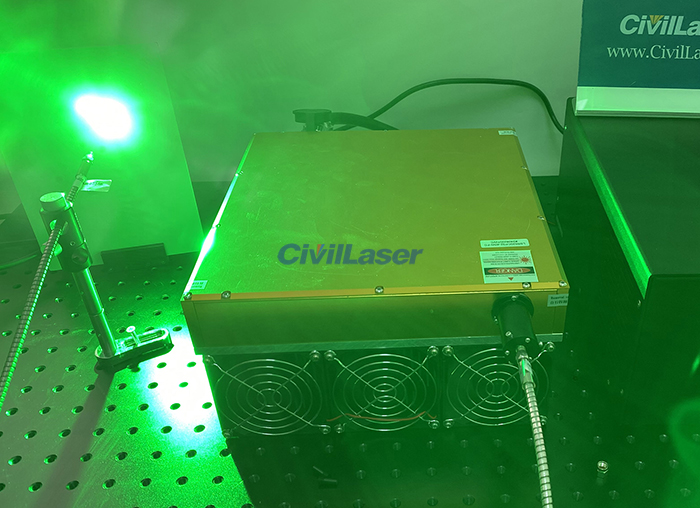
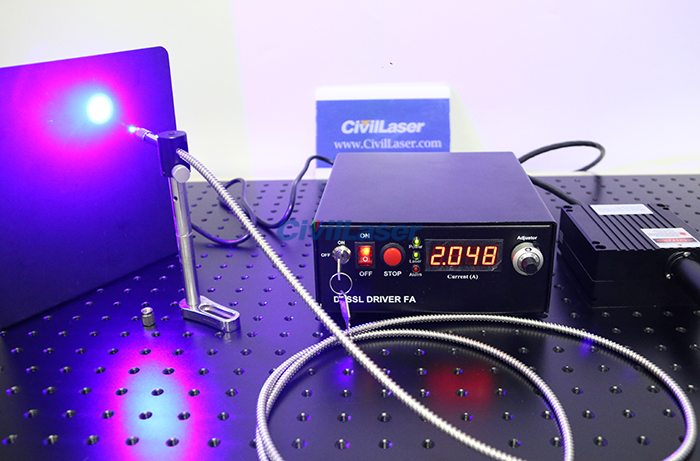
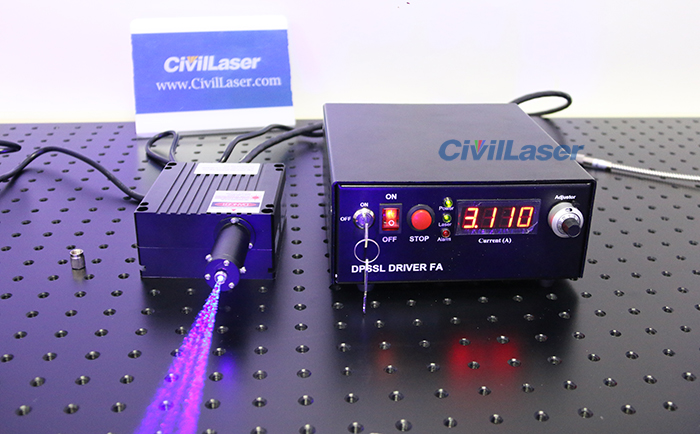
.jpg)
